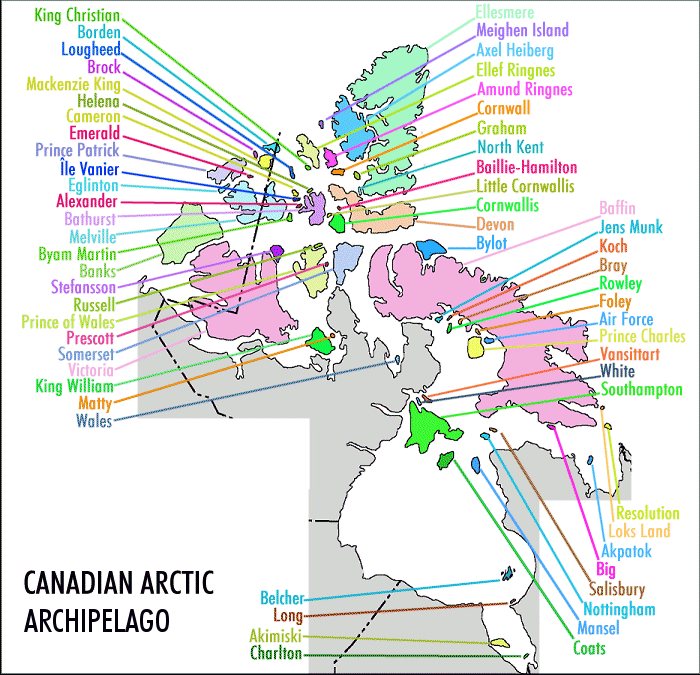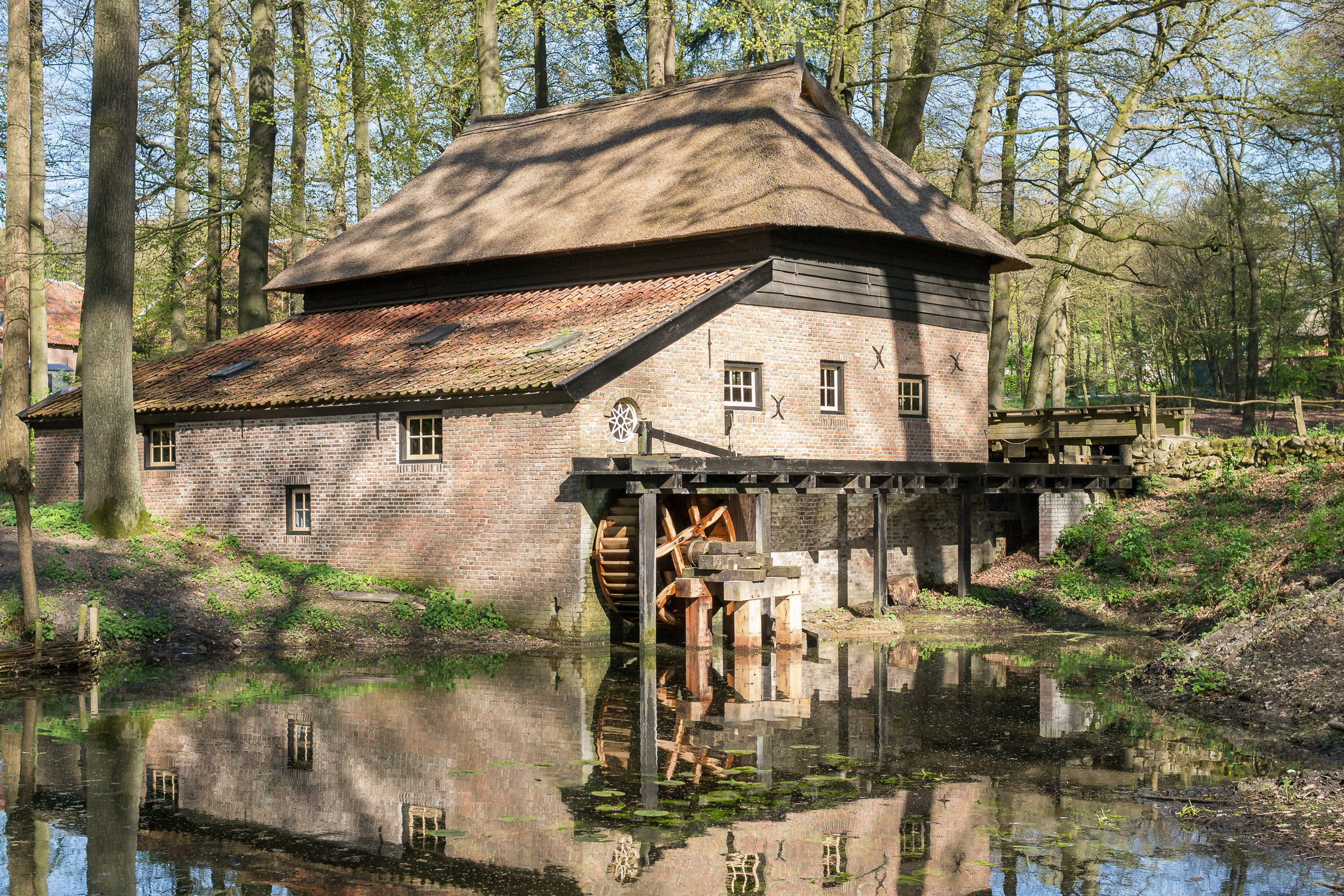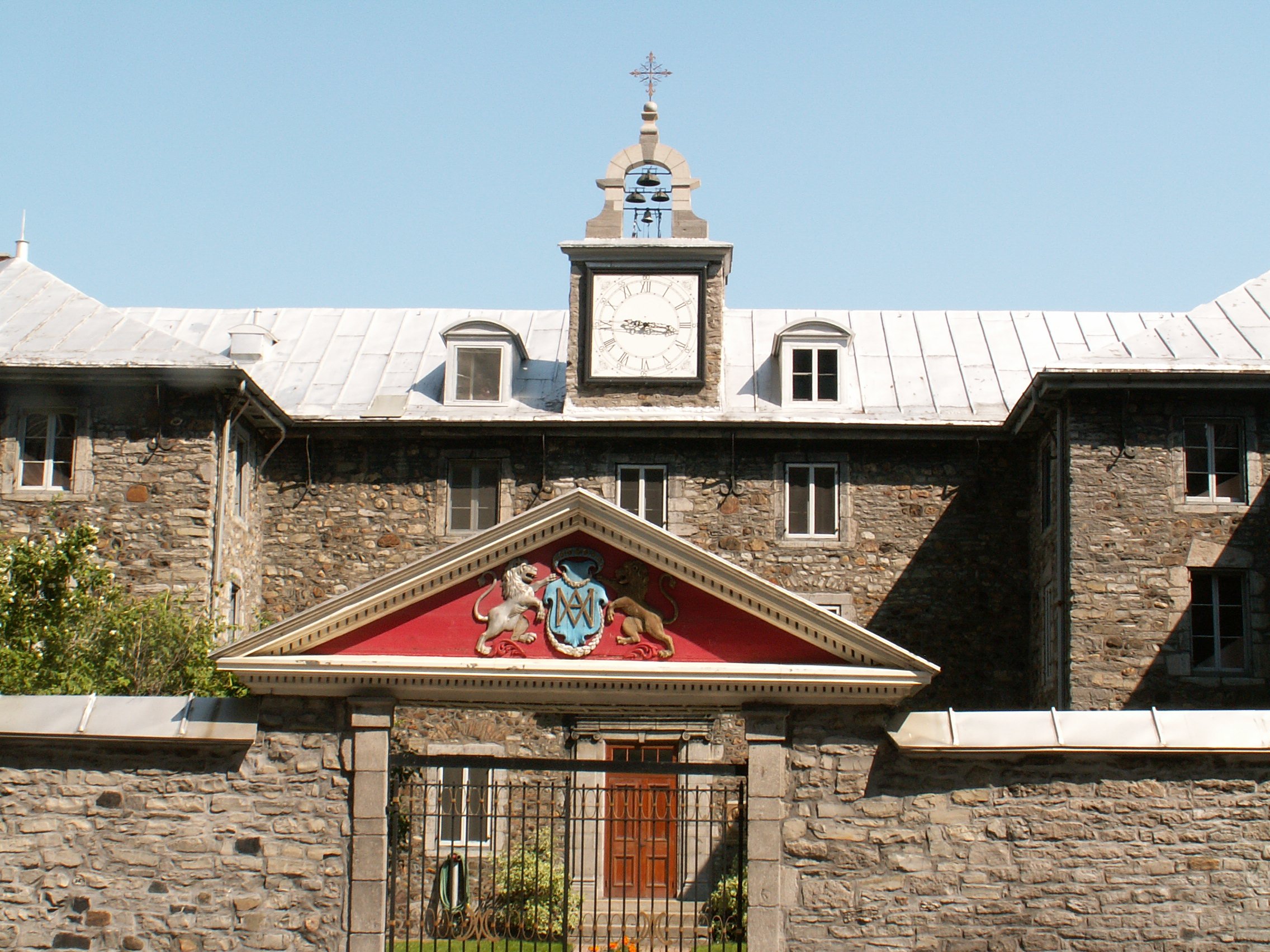|
テ四e De La Visitation
テ四e de la Visitation is a small island in the Riviティre des Prairies, part of the Hochelaga Archipelago, and part of the city of Montreal in Quebec, Canada. Located within the boroughs of Ahuntsic-Cartierville and Montrテゥal-Nord, the island is the site of the L'テ四e-de-la-Visitation Nature Park, as well as the remaining buildings of the historic Sault-au-Rテゥcollet district. The island also includes the former hydraulic installations, l'テョle du Cheval-de-Terre, which is connected to Laval by the Riviティre des Prairies generating station, as well as a wooded area left intact along the Riviティre des Prairies. History Known as Branchereau Island until 1750, テ四e de la Visitation borrows its name from the parish of the Visitation of the Blessed Virgin-Mary which was founded in 1736. In order to control the force of the current, the Sulpician landlords connected the island to the shore by a causeway. Between 1724 and 1726, Simon Sicar, engineer, built the dam and a sawmill near t ... [...More Info...] [...Related Items...] OR: [Wikipedia] [Google] [Baidu] |
Church Of La Visitation-de-la-Bienheureuse-Vierge-Marie
''L'テ曳lise de la Visitation de la Bienheureuse-Vierge-Marie'' ( en, Church of the Visitation of the Blessed Virgin Mary) is a church in the neighbourhood of Recollet Falls in Montreal. The oldest church on the island of Montreal The Island of Montreal (french: テ四e de Montrテゥal) is a large island in southwestern Quebec, Canada, that is the site of a number of municipalities including most of the city of Montreal and is the most populous island in Canada. It is the main ..., it was built between 1749 and 1752. Gallery Eglise Visitation Montreal arriere.JPG Visitation Montreal.jpg Nicolas Viel.JPG, Ahuntsic.JPG, External links Fiche de L'テゥglise de la Visitation de la Bienheureuse-Vierge-Marie de la Fondation du patrimoine religieux du Quテゥbec {{monhist La Visitation-de-la-Bienheureuse-Vierge-Marie 18th-century Roman Catholic church buildings in Canada La Landmarks in Montreal French colonial architecture in Canada Ahuntsic-Cartierville Heritage buildi ... [...More Info...] [...Related Items...] OR: [Wikipedia] [Google] [Baidu] |
List Of Islands Of Quebec
This is an incomplete list of islands of Canada. Arctic islands Queen Elizabeth Islands * Adams Island *Alexander Island * Baillie-Hamilton Island * Bathurst Island *Borden Island *Brock Island *Buckingham Island *Byam Martin Island *Cameron Island * Coburg Island * Cornwall Island * Cornwallis Island *Devon Island *Eglinton Island *Ellesmere Island * Emerald Isle *Graham Island *Griffith Island (Nunavut) * Helena Island *Hoved Island *テ四e Vanier *King Christian Island *Little Cornwallis Island *Lougheed Island *Mackenzie King Island *Massey Island *Meighen Island * Melville Island * North Kent Island * Pioneer Island (Nunavut) *Prince Patrick Island * Stor Island *2092 other minor islands includingHans Island ( iu, Tartupaluk), a small uninhabited barren knoll off Ellesmere Island measuring 1.3 kmツイ (shared with Denmark) Belcher Islands *Flaherty Island *Innetalling Island *Kugong Island *Mavor Island * Moore Island *Snape Island * Split Island *Tukarak Island *Wiegand ... [...More Info...] [...Related Items...] OR: [Wikipedia] [Google] [Baidu] |
Cider
Cider ( ) is an alcoholic beverage made from the fermented juice of apples. Cider is widely available in the United Kingdom (particularly in the West Country) and the Republic of Ireland. The UK has the world's highest per capita consumption, as well as the largest cider-producing companies. Ciders from the South West of England are generally higher in alcoholic content. Cider is also popular in many Commonwealth countries, such as India, Canada, Australia, and New Zealand. As well as the UK and its former colonies, cider is popular in Portugal (mainly in Minho and Madeira), France (particularly Normandy and Brittany), Friuli, and northern Spain (specifically Asturias). Central Europe also has its own types of cider with Rhineland-Palatinate and Hesse producing a particularly tart version known as Apfelwein. In the U.S., varieties of fermented cider are often called ''hard cider'' to distinguish alcoholic cider from non-alcoholic apple cider or "sweet cider", also made from ... [...More Info...] [...Related Items...] OR: [Wikipedia] [Google] [Baidu] |
Apple
An apple is an edible fruit produced by an apple tree (''Malus domestica''). Apple fruit tree, trees are agriculture, cultivated worldwide and are the most widely grown species in the genus ''Malus''. The tree originated in Central Asia, where its wild ancestor, ''Malus sieversii'', is still found today. Apples have been grown for thousands of years in Asia and Europe and were brought to North America by European colonization of the Americas, European colonists. Apples have Religion, religious and mythology, mythological significance in many cultures, including Norse mythology, Norse, Greek mythology, Greek, and Christianity in Europe, European Christian tradition. Apples grown from seed tend to be very different from those of their parents, and the resultant fruit frequently lacks desired characteristics. Generally, apple cultivars are propagated by clonal grafting onto rootstocks. Apple trees grown without rootstocks tend to be larger and much slower to fruit after plantin ... [...More Info...] [...Related Items...] OR: [Wikipedia] [Google] [Baidu] |
Paper Mill
A paper mill is a factory devoted to making paper from vegetable fibres such as wood pulp, old rags, and other ingredients. Prior to the invention and adoption of the Fourdrinier machine and other types of paper machine that use an endless belt, all paper in a paper mill was made by hand, one sheet at a time, by specialized laborers. History Historical investigations into the origin of the paper mill are complicated by differing definitions and loose terminology from modern authors: Many modern scholars use the term to refer indiscriminately to all kinds of mills, whether powered by humans, by animals or by water. Their propensity to refer to any ancient paper manufacturing center as a "mill", without further specifying its exact power source, has increased the difficulty of identifying the particularly efficient and historically important water-powered type. Human and animal-powered mills The use of human and animal powered mills was known to Muslim and Chinese paperma ... [...More Info...] [...Related Items...] OR: [Wikipedia] [Google] [Baidu] |
Sawmill
A sawmill (saw mill, saw-mill) or lumber mill is a facility where logs are cut into lumber. Modern sawmills use a motorized saw to cut logs lengthwise to make long pieces, and crosswise to length depending on standard or custom sizes (dimensional lumber). The "portable" sawmill is of simple operation. The log lies flat on a steel bed, and the motorized saw cuts the log horizontally along the length of the bed, by the operator manually pushing the saw. The most basic kind of sawmill consists of a chainsaw and a customized jig ("Alaskan sawmill"), with similar horizontal operation. Before the invention of the sawmill, boards were made in various manual ways, either rived (split) and planed, hewn, or more often hand sawn by two men with a whipsaw, one above and another in a saw pit below. The earliest known mechanical mill is the Hierapolis sawmill, a Roman water-powered stone mill at Hierapolis, Asia Minor dating back to the 3rd century AD. Other water-powered mills followe ... [...More Info...] [...Related Items...] OR: [Wikipedia] [Google] [Baidu] |
Gristmill
A gristmill (also: grist mill, corn mill, flour mill, feed mill or feedmill) grinds cereal grain into flour and Wheat middlings, middlings. The term can refer to either the Mill (grinding), grinding mechanism or the building that holds it. Grist is grain that has been separated from its chaff in preparation for grinding. History Early history The Greek geographer Strabo reports in his ''Geography'' a water-powered grain-mill to have existed near the palace of king Mithradates VI Eupator at Cabira, Asia Minor, before 71 BC. The early mills had horizontal paddle wheels, an arrangement which later became known as the "Water wheel#Vertical axis, Norse wheel", as many were found in Scandinavia. The paddle wheel was attached to a shaft which was, in turn, attached to the centre of the millstone called the "runner stone". The turning force produced by the water on the paddles was transferred directly to the runner stone, causing it to grind against a stationary "Mill machinery#Wat ... [...More Info...] [...Related Items...] OR: [Wikipedia] [Google] [Baidu] |
Sawmill
A sawmill (saw mill, saw-mill) or lumber mill is a facility where logs are cut into lumber. Modern sawmills use a motorized saw to cut logs lengthwise to make long pieces, and crosswise to length depending on standard or custom sizes (dimensional lumber). The "portable" sawmill is of simple operation. The log lies flat on a steel bed, and the motorized saw cuts the log horizontally along the length of the bed, by the operator manually pushing the saw. The most basic kind of sawmill consists of a chainsaw and a customized jig ("Alaskan sawmill"), with similar horizontal operation. Before the invention of the sawmill, boards were made in various manual ways, either rived (split) and planed, hewn, or more often hand sawn by two men with a whipsaw, one above and another in a saw pit below. The earliest known mechanical mill is the Hierapolis sawmill, a Roman water-powered stone mill at Hierapolis, Asia Minor dating back to the 3rd century AD. Other water-powered mills followe ... [...More Info...] [...Related Items...] OR: [Wikipedia] [Google] [Baidu] |
Causeway
A causeway is a track, road or railway on the upper point of an embankment across "a low, or wet place, or piece of water". It can be constructed of earth, masonry, wood, or concrete. One of the earliest known wooden causeways is the Sweet Track in the Somerset Levels, England, which dates from the Neolithic age. Timber causeways may also be described as both boardwalks and bridges. Etymology When first used, the word ''causeway'' appeared in a form such as "causey way" making clear its derivation from the earlier form "causey". This word seems to have come from the same source by two different routes. It derives ultimately, from the Latin for heel, ''calx'', and most likely comes from the trampling technique to consolidate earthworks. Originally, the construction of a causeway utilised earth that had been trodden upon to compact and harden it as much as possible, one layer at a time, often by enslaved bodies or flocks of sheep. Today, this work is done by machines. The s ... [...More Info...] [...Related Items...] OR: [Wikipedia] [Google] [Baidu] |
Sulpician
The Society of Priests of Saint-Sulpice (french: Compagnie des Prテェtres de Saint-Sulpice), abbreviated PSS also known as the Sulpicians is a society of apostolic life of Pontifical Right for men, named after the Church of Saint-Sulpice, Paris, where it was founded. The members of the Society add the nominal letters PSS after their names to indicate membership in the Congregation. Typically, priests become members of the Society of the Priests of St. Sulpice only after ordination and some years of pastoral work. The purpose of the society is mainly the education of priests and to some extent parish work. As their main role is the education of those preparing to become priests, Sulpicians place great emphasis on the academic and spiritual formation of their own members, who commit themselves to undergoing lifelong development in these areas. The Society is divided into three provinces, operating in various countries: the Province of France, Canada, and the United States. In Franc ... [...More Info...] [...Related Items...] OR: [Wikipedia] [Google] [Baidu] |
Riviティre Des Prairies Generating Station
The Riviティre des Prairies generating station (in French: ''Centrale de la Riviティre des Prairies'') is a run of river hydroelectric power station on the Riviティre des Prairies between the islands of Jesus and Montreal, Quebec, Canada. Built in 1929, it is now managed and operated by Hydro-Quテゥbec. It has a generating capacity of 48 MW. There is no lock allowing boats to bypass the dam. Statistics: * Year built: 1929 * Installed capacity: 48 MW * Number of generators: 6 * Hydraulic head: * Hydraulic flow: ~ * Reservoir: n/a (run-of-river) See also * テ四e de la Visitation *List of bridges in Montreal *List of crossings of the Riviティre des Prairies This is a list of bridges and other crossings of the Riviティre des Prairies from the Saint Lawrence River upstream to the Ottawa River (Lac des Deux Montagnes). See also * List of bridges in Quebec * List of bridges to the Island of Montreal * ... * List of hydroelectric stations * List of reservoirs and dams in Quebec External ... [...More Info...] [...Related Items...] OR: [Wikipedia] [Google] [Baidu] |










